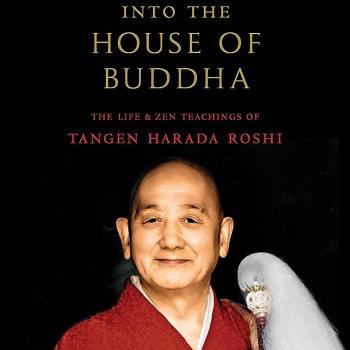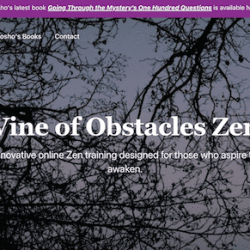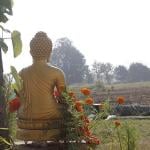Photo: Suzuki Roshi and Katagiri Roshi (top right) from the blog Suzuki Roshi Dharma Talks.
The good folks over at the Soto Zen Text Project posted portions of an important document recently, Standard Observances of the Soto Zen School, translated by a fine scholar, T. Griffith Foulk. There is order information on the bottom of the page if you are so inclined.
Online and free to the Zen public they offer a detailed table of contents – interesting reading for Soto Zenophiles like myself – and a wonderful introduction by Foulk that traces the complex history of the text and also has passages about what “Zen” is/was in Japan and what it is in the West. If an alien from planet Xedu were to glance over the table of contents and then read Ezra Bayda’s book on Zen (reviewed below) it might seem to him/her/it that “Zen” referred to very different creatures.
I’m not suggesting, of course, that we shouldn’t make cultural adaptations. Foulk’s work hints at some of the shifts that were made in Zen observances when it moved from China to Japan. Like the old guy said, change happens. And like Suzuki Roshi is rumored to have said, “If I came back in twenty years, I find that you were all Lutherans,” or something to that effect.
I’m increasingly of the persuasion that it is really important to know Zen with body, mind and heart in order to adapt to the global culture. I don’t think there’s anything wrong with Lutherans, just that there are some differences in what Zen has to offer which we miss when we simply overlay our cultural conditioning on Zen teaching and practice and realization.
Many in the West, for example, dismiss the “rituals” of Zen in favor of “practices.” Foulk argues that this distinction is of Western invention. I find his thinking here so clearly put that I quote several paragraphs below.
Because there is a widespread misconception in the West that ritual is something extraneous, incidental, or even antithetical to Zen in its pure or original form, the question of the role of ritual in the history of Zen needs to be addressed.
To begin with, it is important to understand that in the vocabulary of the Zen tradition itself, there is no term or concept that corresponds very well to the meaning of “ritual” as that word has evolved from the Latin ritus. There is a tendency in European languages to apply the label “ritual” to behaviors that appear more formal or schematic than is necessary to achieve some particular end, or stylized behaviors that display no evident connection between means and ends. We are inclined to withhold the designation “ritual” from behaviors (even highly repetitive ones such as work on an assembly line) that have an obviously pragmatic function, and to think of ritual as activity that either (1) has a symbolic or religious meaning to those who engage in it, (2) is motivated by a quasi-scientific but false understanding of the way things really work, or (3) is a manifestation of some obsessive-compulsive neurosis. The distinction between “practical” and “ritual” behavior is deeply embedded in European languages, but it is alien to the East Asian Buddhist tradition of which Zen is a part.
The Sino-Japanese Buddhist term that comes closest in semantic range to the English “ritual” is gyōji (行持 or 行事), translated herein as “observances.” As is clear from the contents of the Standard Observances (Gyōji kihan 行持軌範), however, that term encompasses a very broad range of activities that Zen clergy engage in. Many observances, such as offerings of food and drink made before icons enshrined on an altar, might be labeled as “rituals” by Western standards, but many others are more likely to be called “practices” (e.g. undertaking moral vows, sitting in meditation), “work” (e.g. serving food, cleaning), “study” (e.g. attending a class on a Zen text), or simply “everyday activities” (e.g. eating, sleeping, and bathing) that are regulated by a particular set of procedures and manners. It is fallacious to imagine that anyone who represented the Zen tradition in the past, before it came into contact with Western culture, could have selectively rejected Buddhist observances that modern Europeans and Americans regard as “ritual” while embracing those that we deem “practice.”












